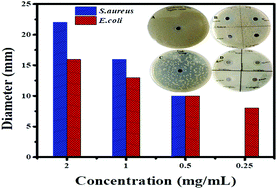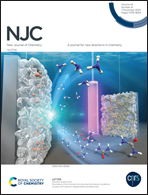Cu/H3BTC MOF as a potential antibacterial therapeutic agent against Staphylococcus aureus and Escherichia coli
Abstract
The objective of this study was to design a more effective antibacterial agent to overcome the problem of fast-growing bacterial resistance. The results showed that a Cu/H3BTC metal–organic framework (MOF) exhibited a notable antibacterial performance towards Staphylococcus aureus (S. aureus) and Escherichia coli (E. coli), and could significantly disrupt the cell membrane, resulting in the discharge of cell constituents. In addition, morphological changes were elucidated using scanning electron microscopy (SEM). SEM photographs demonstrated noticeable and apparent changes in the morphology of bacterial cells, signifying cell damage that was further confirmed via confocal laser scanning microscopy (CLSM). Furthermore, the result of agarose gel electrophoresis (AGE) showed that Cu/H3BTC MOF could enter the bacterial cells by impairing cell membranes and inhibiting the synthesis of DNA. These findings indicated that the Cu/H3BTC MOF is a potent antimicrobial material that can be applied to hinder the growth of pathogenic microbes.



 Please wait while we load your content...
Please wait while we load your content...